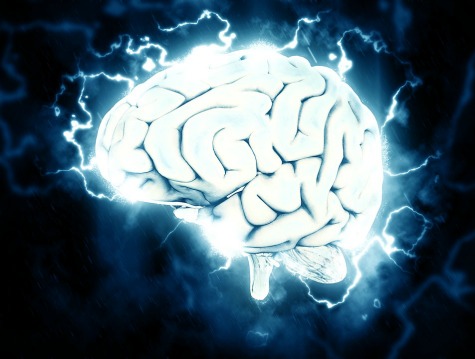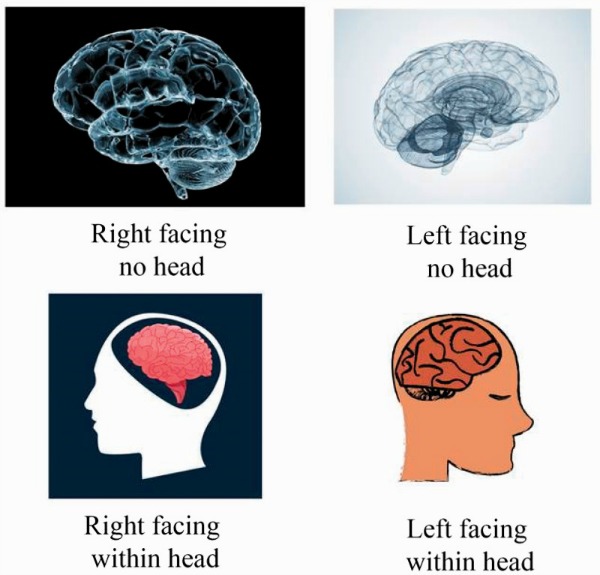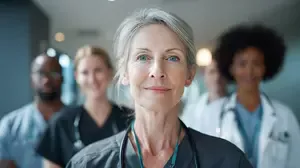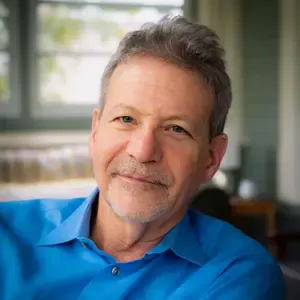Turning the Other Lobe: Directional Biases in Brain Diagrams
Richard Wiseman and Adrian M. Owen
Want To Study Psychology?
Abstract
Past research shows that in drawn or photographic portraits, people are significantly more likely to be posed facing to their right than their left. We examined whether the same type of bias exists among sagittal images of the human brain. An exhaustive search of Google images using the term ‘brain sagittal view’ yielded 425 images of a left or right facing brain. The direction of each image was coded and revealed that 80% of the brains were right-facing. This bias was present in images that did not contain any representation of a human head. It is argued that the effect might be aesthetic in nature, the result of the Western tradition of reading left to right or due to the facial factors that underlie the bias previously found in portraits.
Keywords
Body perception, cognition, face perception, perception
Prior research has shown that people in both drawn and photographic portraits are more likely to be depicted looking to their right rather than their left (see, e.g., McManus & Humphrey, 1973; Gordon, 1974; Grusser, Selke & Zynda, 1988; Zaidel & Fitzgerald, 1994), and that this is probably due to the increased emotional expressiveness and perceived attractiveness of the left side of the face (Powell & Schirillo, 2009; Blackburn & Schirillo, 2012; Bruno & Bertamini, 2013; Bruno, Bertamini, & Protti, 2015).
|
Books, journal articles, and websites frequently carry diagrams of human brains, and we examined whether the same type of bias exists among these images. McManus (1979) notes that Dr Edwin Clarke pointed out the bias among 49 images of mediaeval drawings and woodcuts of the brain, and we wanted to discover whether the same bias exists in a much larger collection of more contemporary images. A Google image search using the term 'brain sagittal view' returned a total of 640 unique pictures, and 425 of these contained a human brain facing left or right. |
|
The direction of each brain was coded, along with whether it was embedded within a representation of a head or not (see Figure 1). In line with previous research, 80% of the diagrams depicted a brain looking to its right (chi-squared = 82.67, df = 1, p < .01: Cramer’s V = 0.31: 95% CI [0.35, 0.51]).
Figure 1. An illustration the 'right', 'left' and 'head', 'no-head' coding employed during the study.
Significantly, more brains were right facing in both the 'no head' (78.6%, chi-squared = 51.69, df = 1, p < .01: Cramer’s V = 0.30: 95% CI [0.31, 0.51]) and 'head' (83.1%, chi-Squared = 30.47, df = 1, p < .01: Cramer’s V = 0.35: 95% CI [0.32, 0.61]) conditions, and the difference between the conditions was not significant (chi-squared = .85, p = .36: df = 1, Cramer’s V = 0.05: 95% CI [-0.05, 0.31]), suggesting that the bias is not enhanced by the presence of head-related cues.
There is no structural or functional reason to depict the brain facing in one particular direction, and the bias may be due to several factors. For example, it could be the result of graphic artists finding it more aesthetically pleasing to have the brain facing to its right. Alternatively, because those in Western cultures read left to right, it makes more sense to encounter the anterior part of any image prior to the posterior (Suitner & McManus, 2011). Finally, it is possible that the effect might be, at least to some degree, due to seeing a greater proportion of portraits facing the right.
In addition, the same method was used to analyze roughly the same number of human profiles, and revealed additional evidence to support the notion that portraits of actual faces tend to be right facing (Google search term: 'face side view', N = 465, right facing 57.6%, chi-squared = 5.16, p = .02: df?= 1, Cramer’s V = 0.08; 95% CI [0.25, 0.42]).
In short, it is clear that in addition to turning the other cheek, many people are also turning the other lobe.
Declaration of Conflicting Interests
The author(s) declared no potential conflicts of interest with respect to the research, authorship, and/or publication of this article.
Funding
The author(s) disclosed receipt of the following financial support for the research, authorship, and/or publication of this article: AMO is supported by the Canada Excellence Research Chair (CERC) program.
References
Blackburn K., Schirillo J. (2012) Emotive hemispheric differences measured in real-life portraits using pupil diameter and subjective aesthetic preferences. Experimental Brain Research 219: 447–455. doi:10.1007/s00221-012-3091-y.
Bruno N., Bertamini M. (2013) Self-portraits: Smartphones reveal a side bias in non-artists. PLoS One 8: e55141, doi:10.1371/journal.pone.0055141.
Bruno N., Bertamini M., Protti F. (2015) Selfie and the city: A world-wide, large, and ecologically valid database reveals a two-pronged side bias in naive self-portraits. PLoS One 10: e01224999.
Gordon I. (1974) Left and right in art. In: O’Hare D. (ed.) Psychology and the arts, Brighton, England: Harvester Press, pp. 211–241.
Grusser O. J., Selke T., Zynda B. (1988) Cerebral lateralisation and some implications for art, aesthetic perception, and artistic creativity. In: Reutshcler I., Herzberger B., Epstein D. (eds) Beauty & the brain: Biological aspects of aesthetics, Boston, MA: Berkhaluer Verlag, pp. 257–293.
McManus C., Humphrey N. (1973) Turning the left cheek. Nature 243: 271–272.
McManus, I. C. (1979). Determinants of laterality in man (Unpublished PhD thesis). University of Cambridge, England.
Powell W. R., Schirillo J. A. (2009) Asymmetrical facial expressions in portraits and hemispheric laterality: A literature review. Laterality: Asymmetries of Body, Brain and Cognition 14: 545–572. doi:10.1080/13576500802680336.
Suitner C., McManus I. C. (2011) Aesthetic asymmetries, spatial agency, and art history: A social psychological perspective. In: Schubert T. W., Maas A. (eds) Spatial dimensions of social thought, Berlin, Germany: De Gruyter Mouton, pp. 277–301.
Zaidel D. W., Fitzgerald P. (1994) Sex of the face in Western art: Left and right in portraits. Empirical Studies of the Arts 12: 9.
Article Information
"Turning the Other Lobe: Directional Biases in Brain Diagrams" by Richard Wiseman and Adrian M. Owen is licensed under CC BY 3.0.
Volume: 8 issue: 3,
Article first published online: May 18, 2017; Issue published: June 1, 2017.
DOI: 10.1177/2041669517707769.
Articles from i-Perception are provided here courtesy of SAGE Publications.
Recent Articles
-
How Stress and Cognitive Load Affect Decision Making | Psychology
Jan 15, 26 03:35 PM
Stress and cognitive load shape how decisions are made. Learn how mental overload affects attention, working memory, and judgment under pressure. -
Healthcare Leadership: Why Management Matters in Patient Care
Jan 09, 26 02:04 PM
Strong healthcare leadership improves patient care, staff wellbeing, and system efficiency. Explore why effective management matters in modern healthcare. -
Jack El-Hai Interview: Psychology, History, and Writing
Jan 08, 26 05:46 AM
An in-depth interview with Jack El-Hai on psychology, history, and writing complex human stories behind medicine, crime, and moral choice.







New! Comments
Have your say about what you just read! Leave me a comment in the box below.